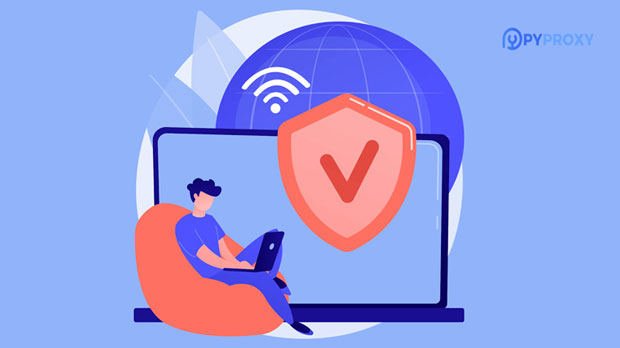When using free proxy servers, users often expect faster browsing speeds and lower latency. However, one common issue that arises with these free services is higher latency, with many free proxy servers exhibiting average delays exceeding 200ms. This raises the question: Is it normal for free proxy servers to have such high latency? In this article, we will explore why free proxy servers typically show such performance and analyze the factors that contribute to their latency issues. Additionally, we will provide insight into how these latency levels affect the overall browsing experience, and offer recommendations for users seeking to minimize lag and improve their online interactions. Understanding Latency and Its Impact on Proxy ServersLatency refers to the time delay between the request made by a user and the server’s response. It is an important factor in the performance of any online service, including proxy servers. Proxy servers act as intermediaries between a user's device and the internet, forwarding requests and responses on behalf of the user. The latency of a proxy server, therefore, directly impacts how fast the user can load websites, stream content, or interact with online services.For any proxy server, latency is affected by multiple factors including server location, network congestion, and processing power. A high latency, especially one above 200ms, can make a noticeable difference in the overall user experience, causing delays in loading times and slow responses when interacting with websites. For free proxy servers, the situation is often more pronounced due to several reasons that we will explore in the following sections.Factors Contributing to High Latency in Free Proxy Servers1. Server LocationOne of the primary factors affecting the latency of any proxy server is the physical distance between the user and the server. For free proxy servers, the locations are often not optimized for speed, as these servers may be distributed across various geographical locations that are far from the user’s region. The longer the distance data needs to travel, the higher the latency. If the free proxy server is located on a different continent or far from the user’s location, it will naturally cause delays, often resulting in latency well above 200ms.2. Network CongestionFree proxy servers typically attract a high volume of users due to their no-cost nature. This increased demand can lead to network congestion, where the server is overwhelmed with too many requests at once. As a result, the server struggles to process requests promptly, causing delays and increasing latency. Network congestion can significantly reduce the performance of proxy servers, making a latency over 200ms not just normal, but inevitable.3. Limited ResourcesFree proxy servers often operate with limited hardware resources. Since they are offered for free, the operators may not invest in high-performance infrastructure. This can include limited bandwidth, low processing power, and insufficient storage capacity. When the server resources are stretched thin due to high user demand, the processing speed slows down, leading to higher latency. As these servers are typically maintained with minimal funding, they are prone to performance bottlenecks that increase delay times.4. Security and Encryption ProcessingMany free proxy servers offer additional layers of security, such as encryption and anonymization features. While these features are beneficial for privacy, they come at a cost—processing overhead. Encrypting and decrypting data takes time, and when the proxy server is overloaded with users and requests, this process can add significant latency. As a result, the average delay of over 200ms becomes common, especially on free servers that don’t have the processing power to handle these tasks efficiently.5. Lack of Optimization and MaintenanceFree proxy servers are often not as well-maintained or optimized as their paid counterparts. Regular maintenance, software updates, and performance optimizations are essential to ensure smooth operation. Free proxy server operators may not prioritize such maintenance, leading to outdated software and inefficient performance. This lack of optimization contributes to the server’s inability to handle traffic efficiently, causing delays and higher latency.Is Latency Over 200ms Normal for Free Proxy Servers?Given the above factors, it is clear that latency above 200ms is not only normal for many free proxy servers but can be expected. Free services often come with trade-offs in terms of performance. While paid proxy services can afford to invest in better infrastructure and more resources, free proxy servers have to operate under tighter constraints. Therefore, users relying on free proxy servers should be prepared for a certain level of latency, especially when compared to premium alternatives.How Latency Affects the User ExperienceHigh latency, such as delays over 200ms, has a direct impact on the user experience. For general web browsing, latency might not be immediately noticeable, but for activities like video streaming, online gaming, or VoIP calls, even small delays can cause significant disruptions. Streaming services may buffer, games may lag, and real-time communications can suffer from poor audio or video quality.For users who rely on free proxy servers for more critical tasks or time-sensitive activities, latency over 200ms can severely hinder productivity. In some cases, users may find it so frustrating that they may seek out alternative solutions or switch to paid services for a better experience.Alternatives to Minimize LatencyWhile free proxy servers will always have some level of latency, there are a few strategies that users can implement to minimize the impact:1. Switch to a Premium Proxy ServiceFor users who need better performance and lower latency, switching to a paid proxy service is often the most effective solution. Premium proxy servers are typically better maintained, equipped with more powerful infrastructure, and optimized for speed.2. Choose a Proxy Server Closer to Your LocationWhen selecting a proxy server, it’s important to choose one that is geographically closer to your location. The shorter the data travel distance, the lower the latency. Many paid services offer servers in multiple locations, allowing users to select the one closest to them.3. Optimize Proxy SettingsCertain settings in the proxy configuration can affect latency. Adjusting these settings for better performance, such as reducing encryption levels or limiting the types of traffic routed through the proxy, can help minimize delays.In conclusion, it is indeed common for free proxy servers to have latency levels above 200ms due to factors such as server location, network congestion, limited resources, and lack of optimization. While this latency can affect the user experience, especially for time-sensitive tasks, it is an expected drawback when using free services. For users seeking a more reliable and faster experience, upgrading to a premium proxy service or using strategies to optimize performance may be necessary to reduce latency and enhance the overall browsing experience.
May 23, 2025



































































